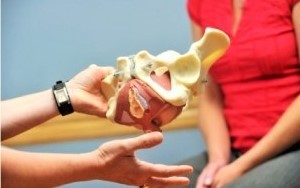Recovering your pelvic floor through physiotherapy treatment
Many people are surprised when their physician refers them to a physiotherapist for treatment of the urinary incontinence. They are used to hearing that physiotherapy treats ankles and knees as opposed to bladders and bowels. Although Women’s Health Physiotherapists and Continence spend helping women, children and men re-gain control of bowel and not just their bladder, but also assist with pelvic pain management and dysfunction. Urinary incontinence is a silent problem, despite over one in three Australian girls and 13 percent of men being affected. Study tells us that 65 percent of girls and 30 percent of men report some sort of incontinence, yet only 30 percent of those people will get assistance. So there is shame or stigma attached to incontinence which acts as a barrier to individuals. Stress incontinence is when you leak urine with increased internal stress like with cough and sneeze or greater impact game, whereas urge incontinence is related to leakage of urine with the impulse to go, often triggered by placing a key in the door or hearing running water.

You will be primarily educated by the physiotherapy about bowel habits and bladder yes constipation will create your control worse! You will discover where the pelvic floor muscles are located, how be asked to do pelvic floor exercises and also they function to help with bladder control. Interestingly, you will be taught the significance of relaxing your Pelvic Floor North York in addition to tightening them to ensure effective activation of the muscles. The main concept to remain dry with cough, sneeze and bending though, would be to pre-contract your pelvic floor muscles before the rise in pressure a sort of learned response to provide support to the bladder and prevent urine escaping. This sounds difficult, but actually being dry is a really strong reward and learning this skill, which can be known as ‘the knack’ is not as difficult as it sounds.
All of us learnt to cover our mouths and sneeze old, and this is. If you are suffering with urge incontinence, then mastering urinary control with what we call the impulse control approaches helps retrain the bladder to act and lessens the terrible anxiety related to bladder urgency and leakage. Some of these strategies include crossing your legs, squeezing your buttocks or curling your feet; using diversion such as performing pelvic floor and counting backwards may help with bladder control exercises to help change off the urge. So the big message from this guide is seek support from continence and women’s health physiotherapist if you have any difficulties with your most private locations.